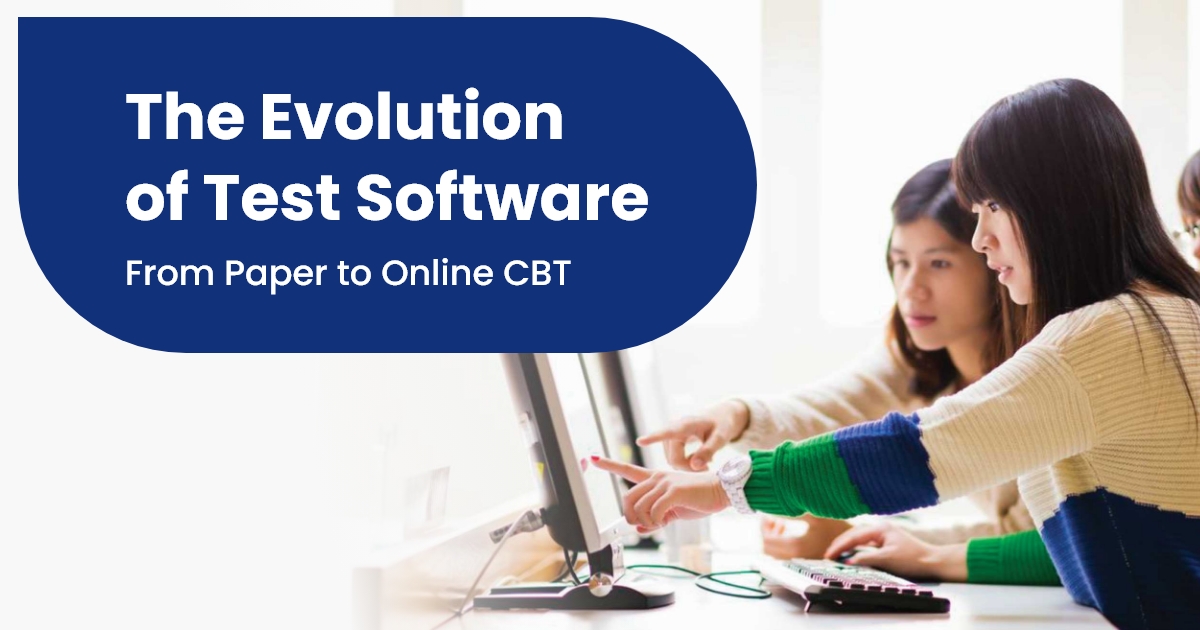In the sphere of education and professional assessments, the scenario has now unfolded where the entire test and knowledge evaluation was subject to a revolutionary change from paper tests to computer-based testing such as Think Exam.
From Paper to Pixels: Brief History
At first, testing was highly laborious and depended a lot on paper. The teachers and officials would devote hours making the question papers of the exam, grading them, and safeguarding the process of evaluation. The process was reliable but too time-consuming and sometimes prone to error. This system was in place for many years, which limited its scope.
Then it started in the late 20th century with the advent of computer-based testing, and this system provided the initial fundamentals required within physical infrastructures, such as computer labs, before any testing was conducted. However, it laid the foundation for what was to become examinations-a clearly online phenomenon where such exams could be taken at the user’s convenience, anywhere, anytime.
The Rise of Online Testing
Today, online examination software such as Think Exam is the order of the day. They provide the most cost-effective, front-end, and readily scalable avenue through which educational institutions, private organizations, and certification bodies can conduct assessments.
So how did it all happen? Here is how it breaks down:
- Automation and Efficiency
Old CBT systems were ground-breaking because they automated marking of objective-type questions-and that freed a tremendous amount of time from administrative activities. Today, CBT systems offer the potential of AI-powered analytics, feature custom test template creation, and instant feedback capabilities-never even dreamed of by their predecessor, designed maybe decades ago.
- Thus Readily Accessible By Everyone
Paper examinations often posed a logistical problem, especially if it were a one-time event for so many individuals. Online CBT platforms easily help treat that case by enabling assessment to be taken on any device that connects to the internet. Think Exam, for example, allows mobile devices, tablets, or desktops, democratising education and training.
- Better Security
A major headache in traditional methods was the constant scope for paper leaks and malpractices. Online CBT methods today come equipped with innovative applications like proctoring tools, question randomisation, and encrypted test environments to ensure testing integrity. That is how trust is created by using technologies such as integration found here on Think Exam.
- Customised Learning & Testing
Modern test software includes adaptive testing. Instead of everyone experiencing the same test, the new platforms such as Think Exam cater to individual strengths and weaknesses to create individualised assessments that pave the way towards more effective learning outcomes.
Benefits of Online Testing Platforms
It is not only convenient that comes with online CBT test-taking, but also the whole experience of testing is transformed to being ice-creamy good.
- Scalability: Whether for 10 or 10,000 test-takers, platforms like Think Exam handle it effortlessly. Eco-Friendly: Less paper goes well with saving the endangered earth.
- Data-Driven Insights: Comprehensive reporting tools generate actionable insights about learner performance
- Flexibility: Tests can be conducted anytime, anywhere without regional-specific limiting settings.
Think Exam: The Path-breaker in Modern Testing.
Think Exam happens to be a fast-growing online CBT testing platform, making a mark at the forefront of this evolutionary change. But Think Exam redefines such requisites by being user-friendly, customizable, and with very robust analytics.
Be it that school administrators streamline the examinations, the corporate trainer attempts to up-skill employees, or the certification body makes a firm effort to ensure compliance, Think Exam extends the answer apt for the specific audience.
The Future of Testing
Further’ for artificial intelligence and machine learning will enter the role for assessments. Be expecting AI-supervised question creation, deeper insights into learner behavior, and further immersion in testing environments through virtual reality. Platforms such as Think Exam have already paved the road for these advanced developments.
Conclusion:
So, from pen-paper examinations to online CBT was all transformation, and platforms such as Think Exam don’t just help in the testing, rather improve learning outcomes and bring in a future where technology and education will share the same space.
Are you ready for this revolution? Discover how Think Exam can revolutionize the experience of assessments!
Frequently Asked Questions (FAQs)
- What is computer-based testing (CBT)?
Computer-based testing is a means in which examinations are conducted with the use of digital platforms. It provides automation capability like grading and flexibility in taking exams online from anywhere around the world.
- In what ways did online testing effectively improve the traditional testing process?
Online testing reduces logistical challenges, ensures faster evaluation, improves security with features like proctoring tools, and offers personalised learning through adaptive testing.
- What are the core advantages of choosing Think Exam?
Scalability, eco-friendliness, and data analytic capability, with flexibility towards conducting tests, are part of the services offered in Think Exam. It is also very customizable and user-friendly.
- How Can Think Exam Change My Organisation’s Assessment Process?
Think Exam, however, would be able to simplify the process of testing, would increase security, offer strong analytics, and make it adaptable for the user’s various customs themselves, whether they are educators, trainers, and certification bodies.
- To what extent would the platforms come like Think Exam measure metrics?
It would range from a small group of 10 to even thousands, making the platform good for any type of organisation.








